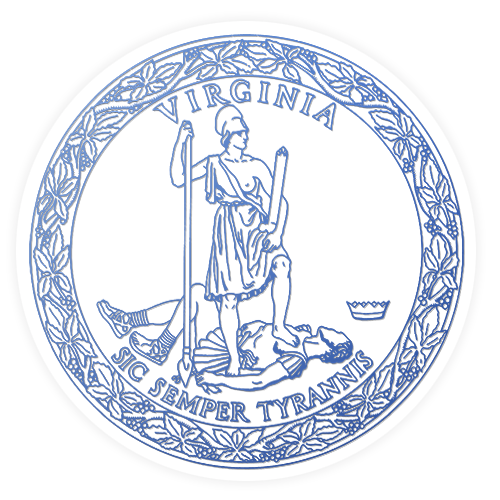International Space Station Resupply Mission Launches from Mid-Atlantic Regional Spaceport
Spacecraft named in honor of first African American astronaut
RICHMOND—The 13th cargo resupply mission to the International Space Station successfully launched today at 3:21 p.m. from Wallops Island. The mission will deliver 8,009 pounds of cargo to the space station.
The “NG-13” mission is a partnership of the Virginia Commercial Space Flight Authority (Virginia Space), NASA Wallops Flight Facility, and Northrop Grumman Innovation Systems. The spacecraft launched from Virginia Space’s Mid-Atlantic Regional Spaceport (MARS) Pad 0A.
Northrop Grumman named the NG-13 spacecraft after former astronaut Robert H. Lawrence, Jr. He became the first African American astronaut in 1967, when the Air Force selected him as a member of the third group of astronauts for the Manned Orbiting Laboratory program. Major Lawrence served in the United States Air Force as an officer and pilot, accumulating more than 2,500 flight hours, including 2,000 in jets. He spent much of his career training other pilots in cutting-edge flight maneuvers and techniques. His Air Force honors included the Commendation Medal and the Outstanding Unit Citation.
“Today’s launch is delivering equipment to the International Space Station, where astronauts are advancing scientific understanding,” said Governor Northam. “This important mission honors the legacy of Major Robert Lawrence, who dedicated his career to advancing science through flight.”
NASA and its partners have successfully supported humans continuously living in space since the Expedition 1 crew arrived at the International Space Station (ISS) on November 2, 2000. The unique microgravity laboratory has hosted 239 people from 19 countries, more than 2,600 experiments from 3,900 researchers in more than 107 countries, and a variety of international and commercial spacecraft. The space station also is facilitating the growth of a robust commercial market in low-Earth orbit for research, technology development, and crew and cargo transportation.
“The world-class infrastructure and technology on Wallops Island is expanding opportunities for science, research, national security, and ISS cargo resupply missions,” said Secretary of Transportation Shannon Valentine. “Collaboration among the Commonwealth, Virginia Space, and NASA Wallops will continue to grow the potential of this strategic national asset and gateway to space.”
The Commonwealth built MARS Pad 0A to accommodate the Antares 230+ rocket configuration and Cygnus spacecraft. Modifications in 2019 made it possible to accommodate the loading of time-sensitive experiments into the Cygnus spacecraft up to 24 hours before liftoff, shortening the previous four-day pre-loading requirement. This is the second official mission to use this loading capability, which has made the MARS facility eligible for missions that include life science investigations in the payload.
This will be the second mission under Northrop Grumman’s Commercial Resupply Services-2 contract with NASA, for which the company will fly a minimum of six missions to the ISS through 2024.
The Antares rocket will boost an unmanned Cygnus spacecraft carrying more than 8,000 pounds of payload to the ISS that includes scientific investigations, supplies, and vehicle hardware for the orbital laboratory and its crew.
The scientific investigations launching on Cygnus are part of commercial and academic payloads across a variety of disciplines, including:
- Mobile SpaceLab, a tissue and cell culturing facility for sophisticated microgravity biology experiments.
- Mochii, a miniature scanning electron microscope for analysis of small and microscopic particles in space. This onsite imaging and measurement of particles could be a game-changer for microgravity research in Low Earth Orbit.
- OsteoOmics, an experiment to investigate astronaut bone loss due to a lack of gravity while they are in orbit. The study of signaling pathways as well as gene and protein expression could also have implications for patients on Earth.
- Phage Evolution, an investigation that aims to improve understanding of the effects of microgravity and cosmic radiation on bacteriophages (viruses that specifically invade and destroy bacteria without harming human cells) and hosts. This could result in significant developments for phage technology, which would ultimately help protect the health of astronauts on future missions. Targeted phage therapy to eliminate harmful bacteria without causing large-scale damage to a human’s microbiome is currently being utilized on Earth as an alternative to antibiotics in an age of increasing antibiotic resistance.
- Saffire-IV, a fire suppression investigation that will aid understanding of how fires spread in space and will support the development of flame-resistant materials and fire prevention measures. The experiment uses the Cygnus resupply vehicle after it leaves the space station, thereby eliminating exposure of humans or spacecraft to fire danger.
The Cygnus spacecraft will spend about three months attached to the space station. It will then depart the station, the Saffire-IV experiment will be activated, and the spacecraft will deorbit.
“Virginia Space continues to provide reliable ground support systems and personnel through maintenance and operation of MARS Pad 0A, the homeport of the Antares rocket,” said Dale Nash, Executive Director of the Virginia Commercial Space Flight Authority. “The strong and strategic public-public-private partnership of Virginia Space, NASA Goddard’s Wallops Flight Facility, and Northrop Grumman is a unique collaboration that contributes to ongoing mission success.”
The Virginia Commercial Space Flight Authority is a political subdivision of the Commonwealth of Virginia. Virginia Space owns and operates the MARS Spaceport, the MARS Payload Processing Facility, and the MARS Unmanned Systems Test Range. The facilities are all located on the NASA Wallops Flight Facility on Virginia’s Eastern Shore, where their mission is to provide low-cost, safe, reliable, “schedule-friendly” access to space and secure facilities for testing of unmanned vehicles for integration into the National Air Space. Virginia continues to play a key role in national security and assured access to space, as one of only four states in the United States hosting a spaceport licensed by the FAA to launch spacecraft into orbit or on interplanetary trajectories. For more information, visit
vaspace.org.
# # #
